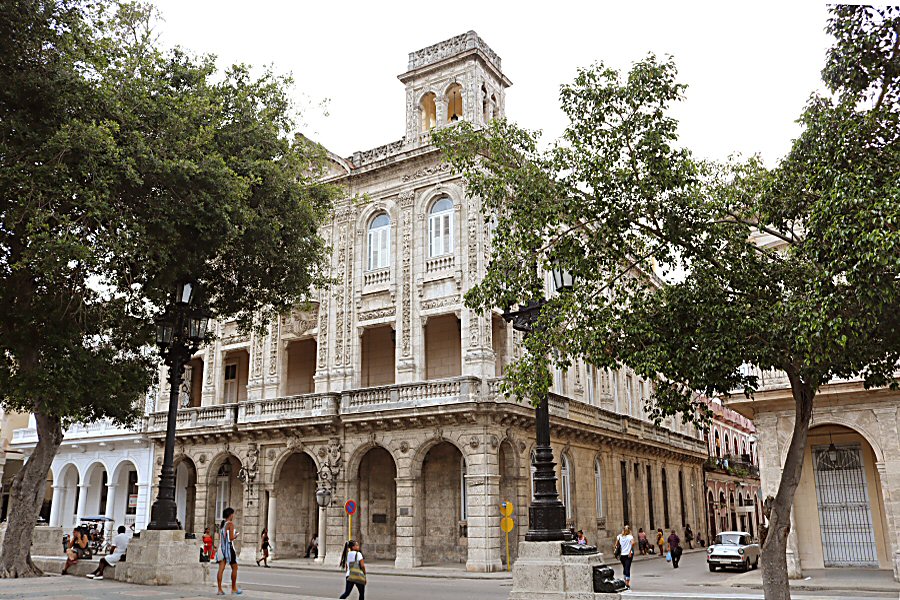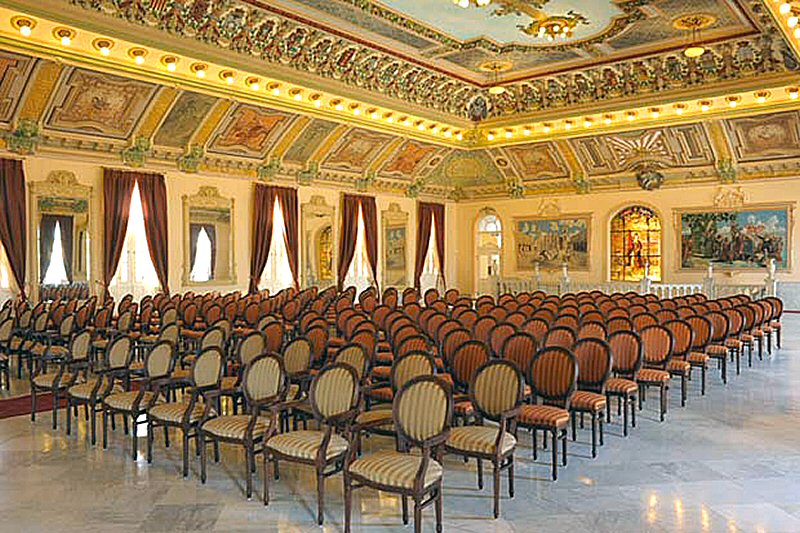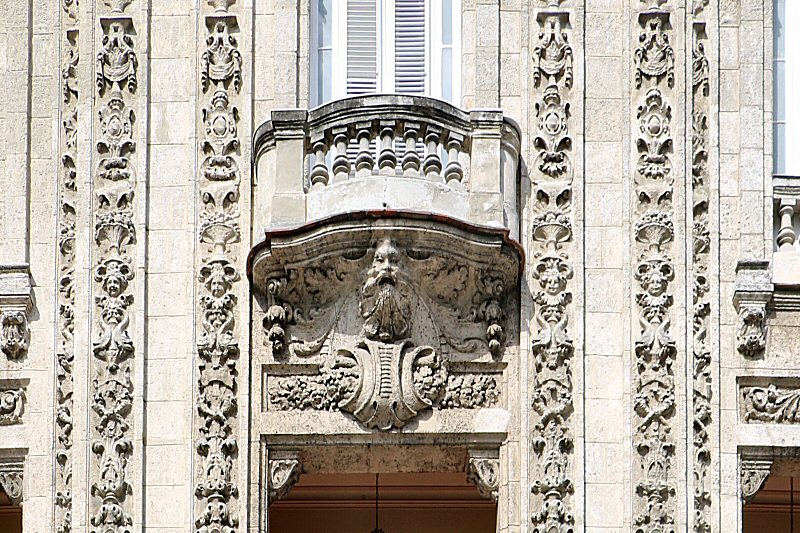
The Palacio de los Matrimonios is
located on the Paseo de Martí #306, where it intersects with the
Ánimas street.

In the colonial time the Cubans of Spanish origin met in
social clubs that provide recreation and leisure activities. The Casio Espaňol was one of such social clubs that was established by the descendants
of the group of Spaniards that had settled in Cuba in 1869. It was opened
first on the San Rafael street, where it intersects with the Industria
street, occupying finally the lavish building on the Paseo de Martí that
functions as Palacio de los Matrimonios (Register Office) today.
After a construction period of two years, the Casio
Espaňol was inaugurated in 1914. President Mario García Menocal and his wife
Mariana Seva, the Minister of Spain, the Ambassador of Spain Alfredo
Mariátegui and the Bishop Pedro González Estrade took part at the opening
ceremony. It was designed by the prestigious Cuban architect Luis Dediot
that was entrusted also by the constructing the headquarters of several
banks in Havana.
Initially the Spaniards did not admit any native
Cuban to their social club, but later they eased up this rule and restricted
it to the disallowance of the participation of the native Cubans only in
their board of directories. Thus, their social club transformed into a
center that aimed to promote, consolidate and spread the brotherhood between
the Cubans and the Spaniards, living on the island. The board of the
directories was selecting the members very meticulously. In 1951, the fame
of the Casio Espaňol became the source of the inspiration to the immortal
cha-cha-chá dance music La Engaňadore (The Deceiver) by Enrique Jorrin, in
that the story of a young girl who attended the ballroom of the Casino
Espaňol, was told (to listen to the music, please
click..
The Casnio Espaňol continued its function until 1959. After the revolution it was nationalized, and it became the House of Culture and the headquarters of the National Union of Arts and Entertainment Workers (SINTAE) in 1963. The same year it witnessed the wake of the corpse of the popular Cuban musician and singer Bartolomé Maximiliano Moré Gutiérrez (Benny Moré), before his remains was buried in his hometown, Santa Isabel de las Lajas. In 1966 the building was converted into the Palacio de los Matrimonios (Palace of Marriages) on the initiative of the Minister of Justice, Alfredo Yabur, becoming the first opened register office in Cuba, so that for more than 40 years it became the favorite place among the couples to marry in a secular way. Its beautiful outward appearance and the rich ornamented decoration of its inner, made this place a preferred venue for marriages, although there were 14 institutions more of this kind in the city. It was preferred not only by the habaneros, but also people from different (even distant) municipalities chose this building to express their wish to become spouses.
The cost of a wedding in this palace was only 1.5
pesos that was necessary for the stamps of the documents. Only the buffet
and the photographs should be paid, but the rest (flowers, toast, music and
the dazzling ambience of the luxury palace) was free of charge.
The overuse of the building led its gradual deterioration, so that a restoration was carried out in 2005, in that a mural, covered by another painting, was discovered in the Salón Rosado (today Salón Rojo) that was used as the meeting room. The mostly rescued painting was representing a rampant lion in a position of attack. After a restoration of six long years the Palacio de los Matrimonios de Prado is once again the Palace of Marriages.
The Palacio de los Matrimonios is one of the elegant
buildings that has heritage value. It was the largest building in Cuba at
the beginning of the Republic. This beautiful neo-renaissance building has
three floors. The extravagant decoration of the façade that was inspired by
the plateresque style, makes it quite exceptional. The plateresque style,
coined by the Spanish writer Diego Ortiz de Zúñiga, is a 16th century
Spanish architectural style, characterized by elaborate ornamentation
suggestive of the filigree of the silversmiths.
The public access to the building is through a wide
entrance on the Paseo de Martí. The splendid marble staircase in the inner
courtyard that leads you to the upper floors, is illuminated by globe lambs
that are mounted in the hands of woman statues, made of wrought iron.
Only the first floor has balconies. Originally there were a sports
hall, a library, a barber shop, showers, a room for billiards and domino, a
room for tresillo (a card game), a canteen, a kitchen and a quarter for use
of the employees on the first two floors.
 On the second floor there is a ballroom with an
elaborately frescoed ceiling (Salón Dorado/Golden Hall) that takes up the
entire upper floor. When the light enters through the three stained glass
windows into the hall, it creates nice shades of colors. At the back of the
hall, where it is accessed by the staircase, two oil paintings are adorning
the wall. One represents the Spanish that set a foot on the island for the
first time during the voyage of Columbus, and the other the Havana
Cathedral. The hall has a seating capacity of 210 persons. There are also
smaller rooms, available for the bride and the groom, such as the Salón
Rosado and the Salón Verde. On any Saturday it is most likely that you will
see a couple of newlyweds taking pictures in the garden.
On the second floor there is a ballroom with an
elaborately frescoed ceiling (Salón Dorado/Golden Hall) that takes up the
entire upper floor. When the light enters through the three stained glass
windows into the hall, it creates nice shades of colors. At the back of the
hall, where it is accessed by the staircase, two oil paintings are adorning
the wall. One represents the Spanish that set a foot on the island for the
first time during the voyage of Columbus, and the other the Havana
Cathedral. The hall has a seating capacity of 210 persons. There are also
smaller rooms, available for the bride and the groom, such as the Salón
Rosado and the Salón Verde. On any Saturday it is most likely that you will
see a couple of newlyweds taking pictures in the garden.

